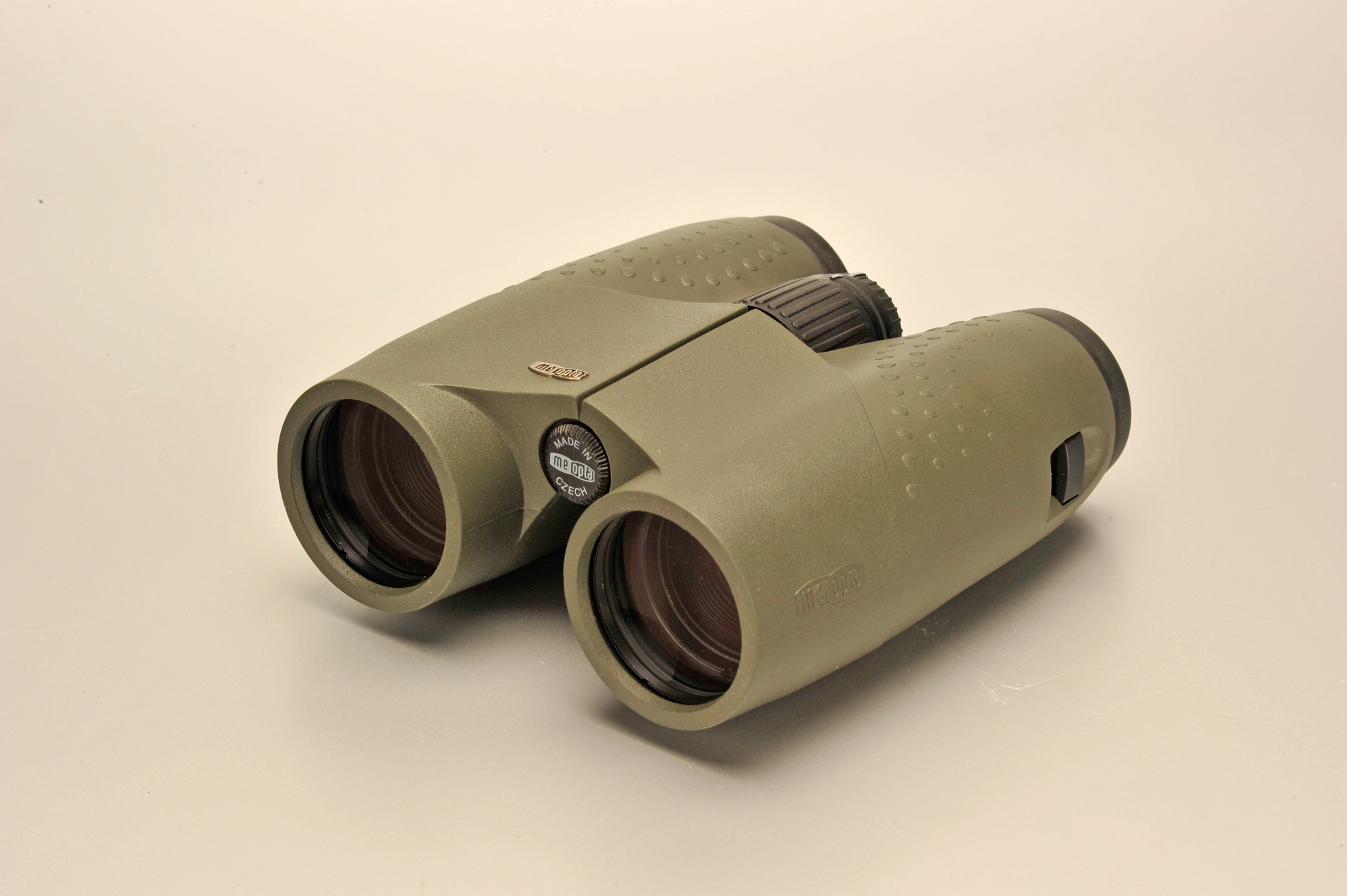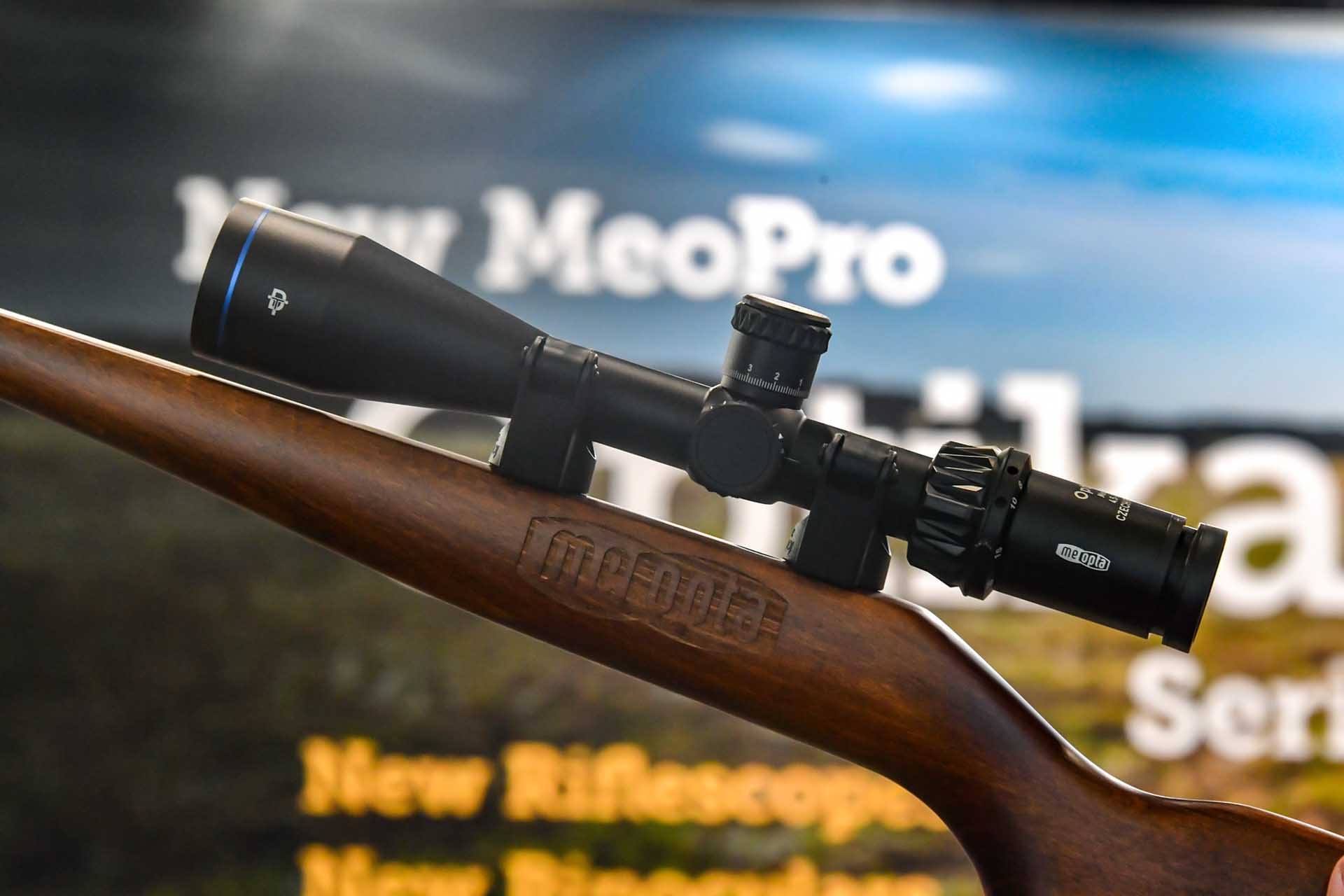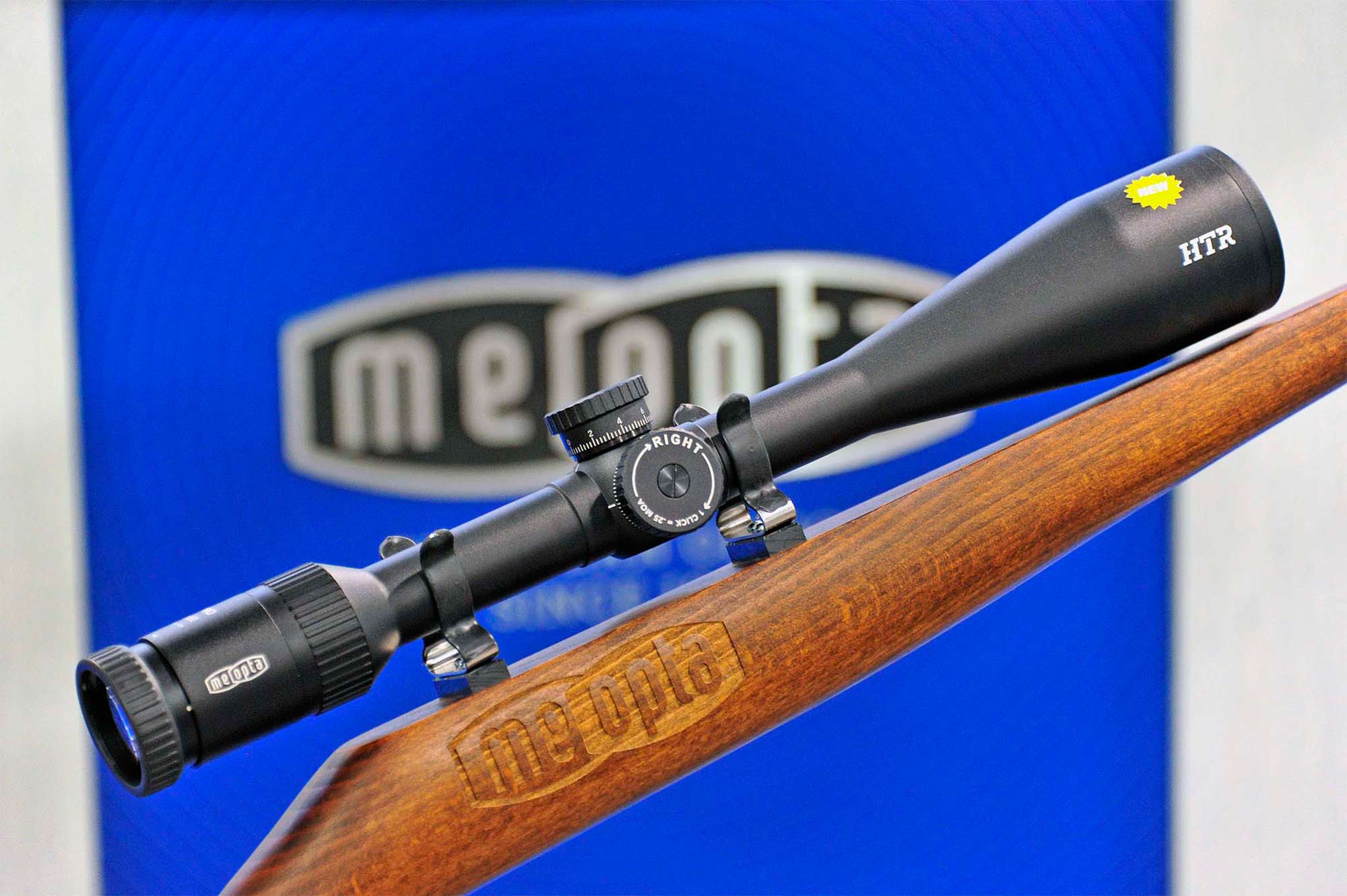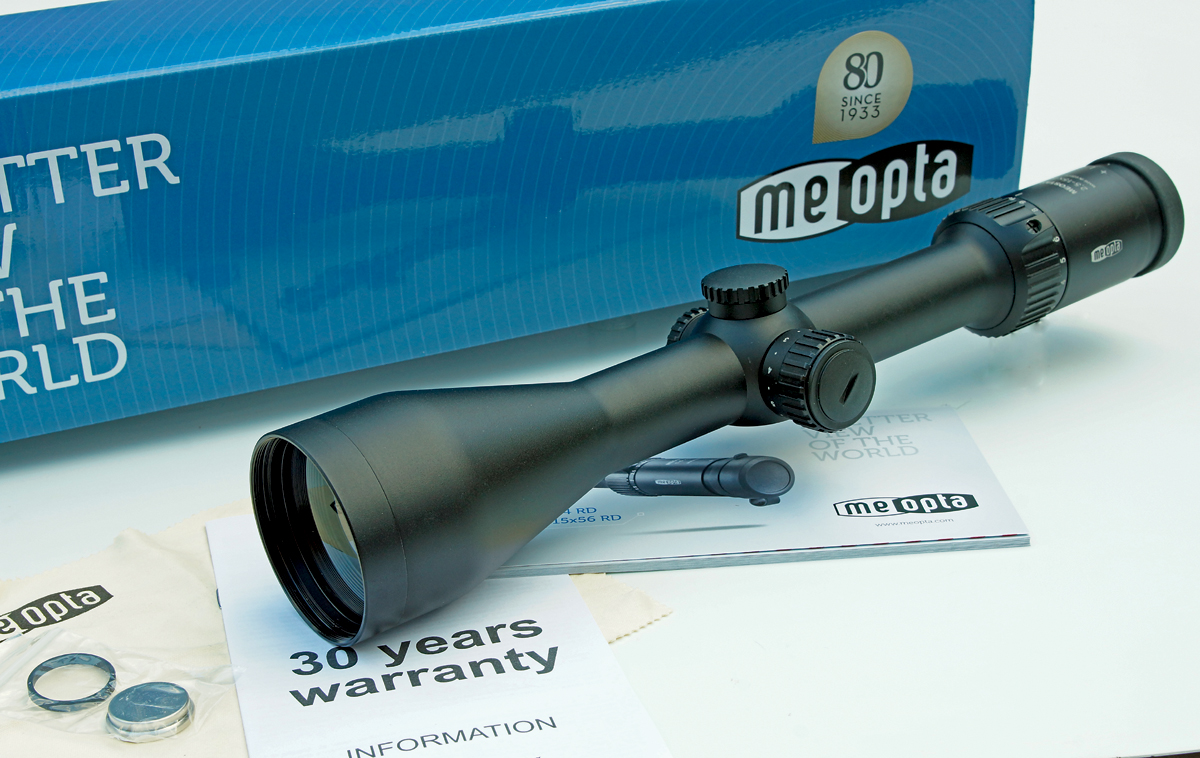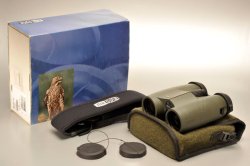
Considered a mature product, since it has been introduced in 2005, the Meopta Meostar B1 was the flagship binocular of the Czech optics manufacturer until the new HD version with Fluoride lens elements was introduced. The product’s specs highlights phase corrected, oversized and high quality BaK-4 roof prisms, fully multi-coated lenses, nitrogen purging, a wide angle FOV, decent light transmission and extended eye relief values.
It is interesting to note that this binocular uses the Schmidt-Pechan prism set in an inverted configuration, placing the half-pentaprism towards the objective lens, instead of the more common Schmidt prism first in the light path.
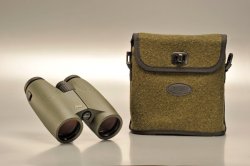
The packaging includes a very traditional, nice and classically designed padded wool carry case, the manual, one of the most attractive and comfortable Neoprene padded straps we’ve ever come across, a rather brittle Bikini eyepiece rainguard (it broke in half during the tests) and a pair of removable, tethered objective covers.
Undoubtedly built as a tank, the first thought that comes to mind heaving the Meostar B1 8x42 in our hands for the first time, is that the instrument must be near indestructible.
The binocular is based on a very sturdy aluminum alloy structure that is rubber armored with a generous layer of green-tinted, relatively hard rubber, which transmit a feel of utter solidity.
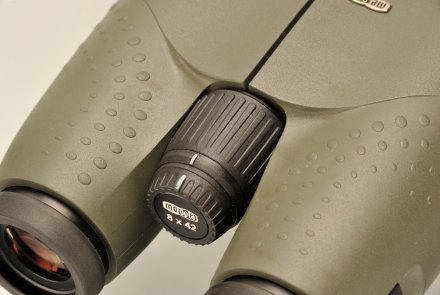
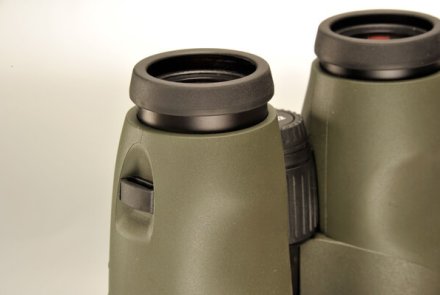
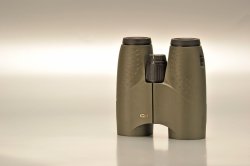
It is very heavy in the hands, with a weight of 890 grams, but this heft is only a hindrance when using the binocular for extended periods of time.
The design is quite pleasant to the eyes, elegant in its simplicity although some may find it a bit stout; the ergonomics favor users with medium to large hands, and additionally, single handed use is rather cumbersome, due to the focusing knob stiffness as well, so that every time we needed to focus we had to hold the binocular with both hands.
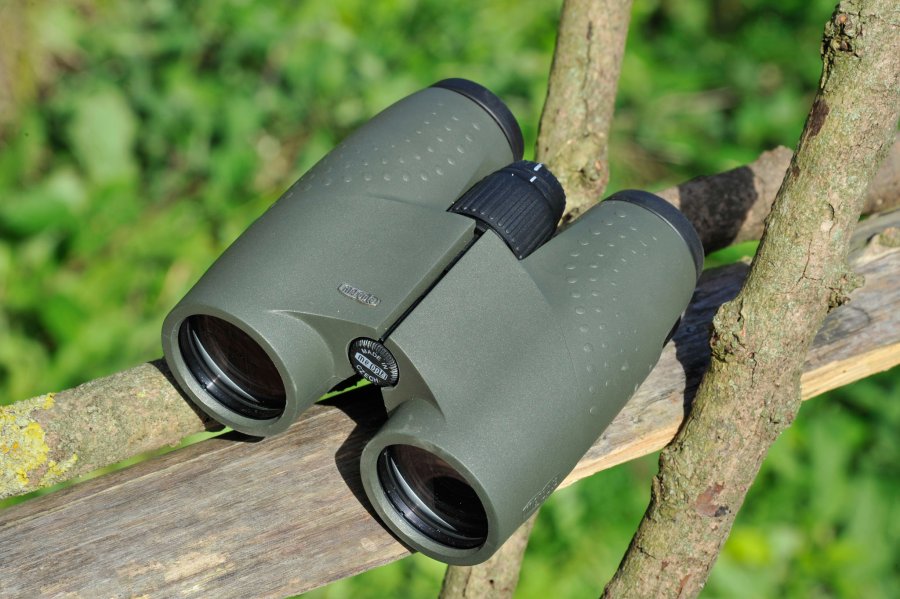

The twist-up eyecups, although stylish, are small and may be difficult to operate with gloves; the right hand eyecup can be removed to accommodate an optional 2x converter, which transforms the binocular in a 16x field spotting scope, a pretty uncommon feature.
We found the usability of the focusing knob, located in the center of the hinge, only sufficient; it is smooth and accurate, but it is overly stiff, suffers from longer than usual travel - more than a full rotation and a half from the nearest focusing distance (measured in 2.3 m) to infinity.
The diopter adjustment operates on an inner lens element, allows for a dioptric correction of +/- 3 and is controlled by a small secondary knob that is coaxial to the main focusing knob.
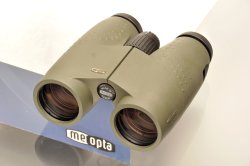
The measured eye relief is around 17,3mm for both eyepieces, while the measured field of view is an excellent 7.77° which translates to a FOV of 136m at 1000m, a meter shy of the specified 137m.
We cannot deny that the optical performance, both lab-measured and perceived by the user on the field of the Meopta Meostar B1 8x42 binocular, is good.
The image is bright, very sharp throughout the field of view, which is not only quite wide but also flat, and contrast is excellent. Geometric aberrations are present, as is some secondary spectrum fringing at the edge of the viewable field. Softness at the edges is noticeable, as is fall of brightness, but both are fairly limited, which is very good considering the wide field of view offered by the instrument.
There’s a slight yellowish-pink tinting of the viewed image, which tends to warm up considerably the color rendition at times.



